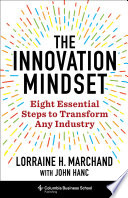

The first key idea in 'The Innovation Mindset' is the importance of adopting a growth mindset. This concept, popularized by psychologist Carol Dweck, emphasizes that abilities and intelligence can be developed through dedication and hard work. In the context of innovation, a growth mindset encourages individuals and organizations to view challenges as opportunities for learning rather than insurmountable obstacles. This perspective fosters resilience and adaptability, which are crucial in a rapidly changing technological landscape. By embracing a growth mindset, teams can cultivate a culture of experimentation, where failure is seen as a stepping stone to success rather than a setback. This idea underlines the necessity of continuous learning, encouraging individuals to seek out new experiences and knowledge that can spark innovative thinking and problem-solving.
Continue readingCollaboration is a cornerstone of innovation. The book emphasizes the need to create environments where diverse teams can come together to share ideas and perspectives. By fostering collaboration, organizations can harness the collective intelligence of their workforce, leading to more creative solutions and breakthroughs. This idea highlights the importance of cross-functional teams, where individuals from different departments and backgrounds contribute their unique skills and insights. The book also discusses the role of leadership in facilitating collaboration, suggesting that leaders should prioritize open communication and trust-building among team members. This collaborative approach not only enhances innovation but also improves employee engagement and satisfaction.
Continue readingInnovation often involves venturing into the unknown, which requires a willingness to take risks. The book advocates for a culture that encourages experimentation and accepts the possibility of failure as part of the innovation process. By creating a safe space for employees to test new ideas without fear of repercussions, organizations can unlock a wealth of creativity and innovation. This idea emphasizes the importance of iterative processes, where ideas are continuously refined and improved based on feedback and results. The book provides examples of companies that have successfully implemented this approach, illustrating how a commitment to experimentation can lead to significant advancements and competitive advantages.
Continue readingIn today's digital age, technology plays a crucial role in driving innovation. The book discusses how organizations can leverage emerging technologies to enhance their innovation processes. This includes adopting tools for data analysis, automation, and digital collaboration. By embracing technology, organizations can streamline operations, gain insights into customer needs, and develop new products and services more efficiently. The book also highlights the importance of staying informed about technological trends and being willing to adapt to new tools and platforms. This proactive approach to technology not only supports innovation but also positions organizations to respond effectively to market changes and customer demands.
Continue readingThe book emphasizes the significance of placing customers at the center of the innovation process. Understanding customer needs, preferences, and pain points is essential for developing products and services that resonate with the market. This idea encourages organizations to engage with their customers through feedback loops, surveys, and direct interactions. By incorporating customer insights into the innovation process, organizations can create solutions that not only meet market demands but also exceed customer expectations. The book provides case studies of companies that have successfully implemented customer-centric innovation strategies, demonstrating how this approach can lead to increased customer loyalty and market success.
Continue readingIn an era where consumers are increasingly conscious of social and environmental issues, the book highlights the importance of integrating sustainability into the innovation mindset. Organizations are encouraged to consider the long-term impact of their products and services on society and the environment. This idea advocates for innovative solutions that address global challenges, such as climate change and social inequality. By prioritizing sustainability, organizations can not only enhance their brand reputation but also tap into new markets and opportunities. The book discusses various frameworks and strategies for incorporating sustainability into the innovation process, emphasizing that responsible innovation is not just a trend but a necessity for future success.
Continue readingThe final key idea focuses on the role of leadership in fostering an innovation mindset within organizations. Effective leaders are visionaries who inspire their teams to think creatively and pursue innovative solutions. The book discusses the traits and behaviors of successful leaders in innovation, including the ability to communicate a clear vision, empower team members, and cultivate a culture of trust and inclusivity. Leaders are encouraged to model innovative thinking and to support their teams in exploring new ideas and approaches. This idea underscores that leadership is not just about managing resources but about inspiring and guiding teams toward a shared vision of innovation and success.
Continue reading